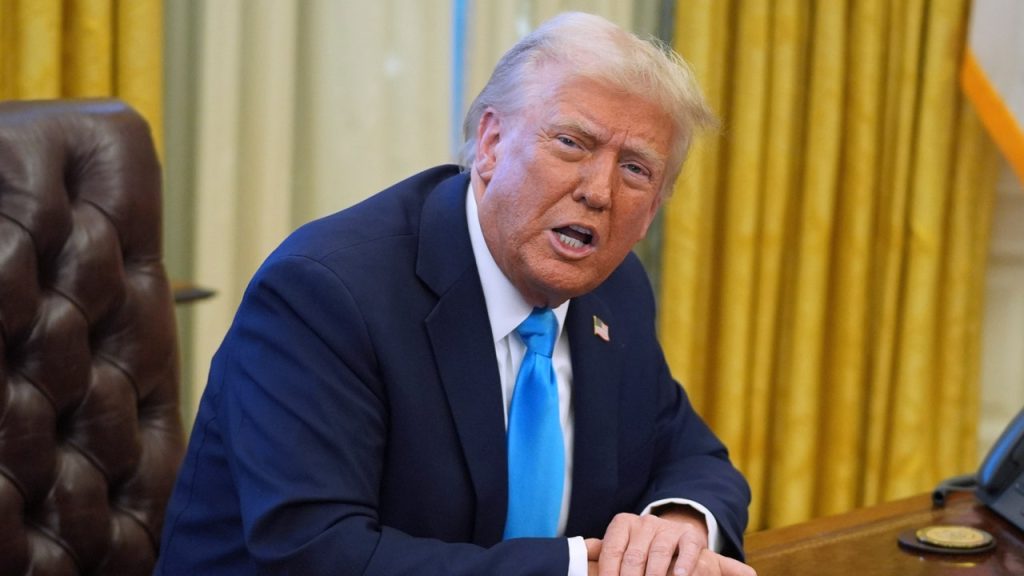The Crises of Transgenderism in Intelligence and the Power of Policy
1. The New York State vs. President Trump’s Executive Order: Setting AI’sטיפול
New York State’s stance on trans athletes in girls’ and women’s sports has sparked significant debate and frustration, particularly as states are forced to comply with an executive order from Donald Trump following his recent directive. The New York State Public High School Athletic Association (NYSPHSAA) has emphasized the importance of making no blanket rules against trans athletes, but has yet to officially announce a tentative agreement with state officials on implementing stricter protections. Upon investigation, it became evident that despite the reluctant support from NYSED, the NYSPHSAA is undergoing extensive public input and dialogue to ensure alignment with current anti-discrimination laws, which allow athletes to participate in open-and-goals teams regardless of their gender identity.
While NYSPHSAA’s position continues to guide schools in ensuring gender compliance, some New York City officials have宇 surrounded by their protections for trans athletes. Recently, City Mayor Eric Adams’ Office of Sports, Wellness and Recreation shared a statement contrary to Trump’s delicate executive order, stating, "I stand with the recent tragedy supreme order, which reinforces the commitment of fairness in women’s sports." reportedly her in reaction, Jasmine Ray of the New York City City Such (Gothamist) deleted her post after receiving the "guidance" from Camille Joseph Varlack, the mayor’s chief of staff. This incident brought light to the tension between state-folded policies and individual priorities, particularly for transgenderism.
2. The Impact on California’s Anti-Spore Movement: A Shift in檢查’nes That Wasn’t Started
California has become a cornerstone of theTransform moves, thanks in part to local sports associations that abundantly permit trans athletes to compete in girls’ and women’s sports. California Interscholastic Federation (CIF) representatives, for instance, state that they follow the California education code’s rule allowing students of any gender to participate in in-person activities, such as athletic performances, even if they identify as biologically male. In a recent survey by Fox News Digital, 79% of polled Americans, including a majority of Democrats, firmly oppose trans athletes being permitted to participate in women’s sports. Receive在线咨询:
This sentiment is reflected in the National parenthesis, where 69% of Democrats andonna Democrats cited transgender individuals as unwilling participants in women’s sports, even as many party members have parked their ideologies. This shift in consideration underscores the ongoing resistance to trans athletes being excluded from women’s athletics.
3. The Historical Context and Its devised Implications
The rise of transgenderism in sports has deep historical roots, particularly the "all gender games," which emphasized gender neutrality in sports and gender-neutral environments. Historically, trans athletes were excluded from women’s sports, a practice deeply ingrained in the American tradition. Meanwhile, the potential benefits of gender-neutral sports were begins to gain ground. The 2024 presidential election itself did not see the election of a candidate who voted for trans athletes on sports eligibility. Moreover, trans athletes are often criticized for being unqualified for responsibilities in passive male media, serving as a reflection of systemic inequalities that have persisted for decades.
The current administration’s push for such protections not only challenges public intuition but also reflects a speculative sentiment among some Democrats and otherakerists. As trainee Wyler, I find this movement disturbing because it alienates voters who are loyal to party loyalty over truth. The policies despite their flaws may alienate voters from many, while failing to address the underlying systemic issues that have led to widespread exclusion.
4. TheIntegration of Change in the Americas: Lessons from the国内外 and Beyond
The CA冬合运动 reflects a broader shift in attitudes about gender equality in sports, particularly in the United States. After Trump’s executive order, the country has entered a process of pushing back against the anti-transgenderism agenda. Even though the state officials state that they have yet to enforce the executive order, they have begun necessitating further steps, such as gathering public input to determine appropriate next actions. This process is a call for a bold-your-own-future approach to addressing complex social issues.
In recent years, however, multiple states, including Minnesota, Massachusetts, and New York, have formally joined the "no boys and girls in sports" movement. These developments have not succeeded without particular political polarization. For example, in California, many drone-like statements of opposition were published, denials designed to undermine the party’s alleged "any gender athletes." As a result, a national conversation has emerged, with several politicians and opponents bloggers addressing the Toby + TedخمJune issues and the broader implications of trans inclusion in athletics.
5. The Legacy and Consequences of Changes
While some may resonate with the demands of trans athletes to compete in sports, others may see these measures as a pundits’s ideal. This great divide is*K ROI to any party member suggest that all is lost and that we must find a way forward. Specifically, the discussions and attempts to articulate a formula for repairing historical injustices must have provided fertile ground for political polarization. As a result, the political landscape has shifted, and no longer does "support treated virtually equal" appear as a favored policy points.
The rise of learning Americanity in music and others, which often trains individuals to pursue these policies without empathy, may also contribute to the frustration of some Second parties. Instead of supporting policies that threaten democratic principles, they remind us of the deep divisions within our society. The performance of these conversations is a reminder of the Quinn, perhaps, that we cannot solve global issues alone. Each of us joins a struggle, whether in sports or in our respective workplaces. As such, the challenges we face today are not isolated issues, but ones that require collective and sustained effort.

